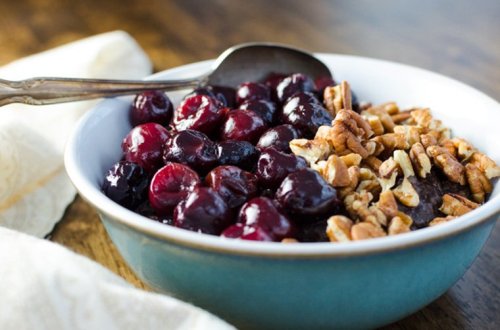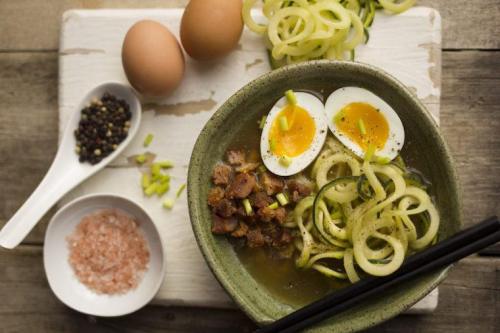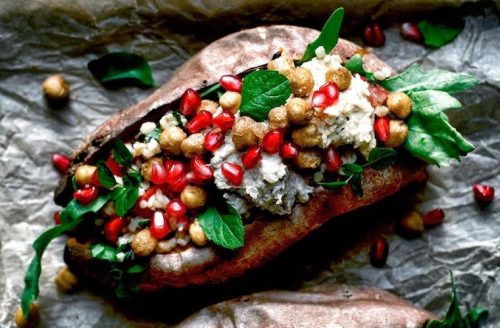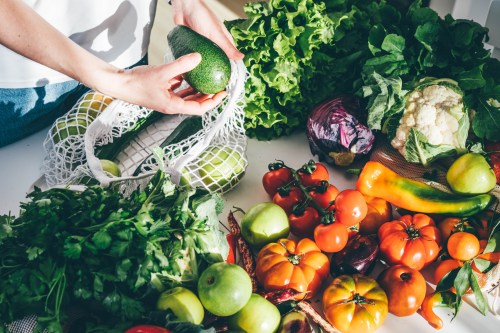Our editors independently select these products. Making a purchase through our links may earn Well+Good a commission
Eat these warming foods for perfectly balanced energy this fall
Qi gong expert and the Urban Monk Pedram Shojai explains the benefits of warming and cooling foods—and when to eat each.

As temperatures begin to drop, you may find the urge to sideline salads and smoothies in favor of more traditionally comforting foods such as soups, stews, and chilis. But according to the ancient Chinese tradition of qi gong—a holistic practice designed to balance your body’s qi, a word that roughly translates to mean “energy”—not everyone should immediately dial up the heat on their meals when they adjust the thermostat in their homes.
In qi gong, foods are categorized along a spectrum from cool to warm to hot. But determining which you should eat isn’t as simple as checking your weather app. While you should take the season into account, your personal constitution and health conditions also come into play. Pedram Shojai, acclaimed qi gong master and author of The Art of Stopping Time, explains: “Warming foods have a net warming effect on the body and vice versa for cold foods. These are properties that have been observed for millennia by Chinese doctors.”
“Warming foods have a net warming effect on the body and vice versa for cold foods. These are properties that have been observed for millennia by Chinese doctors.”
What does this mean for your menu? The idea, ultimately, is to provide your body with balance between what practitioners call the cooling yin and warming yang in order to prevent disease. You’ll want to reach for cool foods like fruits and veggies if it’s warm outside, you tend to “run hot” (oh hi, sweaty palms), or you’re feeling anxious or inflamed. Likewise, Shojai says you should eat warm—think soups and roasted potatoes—if you find frost on your windshield or “experience low energy and have poor digestion.”
That said, Shojai agrees that those who live in colder climates may need a diet more inclusive of warming foods than those who call tropical locales home. So if you saw the leaves change color this year, these are the items you’ll want to add to your shopping list (your personal diet permitting): beef, lamb, pork, ginger, cinnamon, oats, cherries, yams, potatoes, and rice.
One caveat: Shojai points out that there’s a difference between warm foods and hot foods—things like curry, deep-fried anything, and raw onions. “Hot foods tend to be used more medicinally and in lower dosage,” he explains. “The thing with food is that it can be used every day to nudge our health in a particular direction, so we need to be careful with extreme remedies used too frequently.”
Keep reading for 3 recipes that make the most of these warming ingredients.

1. Quick chocolate cherry oatmeal
Consider this recipe permission to use Chinese holistic health practices as an excuse to eat chocolate in the morning, but don’t be afraid to sub cacao powder in for the cocoa if you want to up the health-benefits ante.

2. Bacon and egg ramen
What’s more warming than a piping hot bowl of ramen? This ketogenic recipe includes both pork and ginger for double the balancing effects. Just be sure not to add too much of the spicy stuff unless you’re really looking to turn up the heat within your body.

3. Cozy stuffed sweet potatoes
I mean, the name alone evokes a much-needed hug. This upgraded baked potato makes delicious use of warming spices like cinnamon and coriander, then you can add the recommended Mediterranean-inspired toppings—like tabbouleh, hummus, and baba ghanoush—to suit your individual qi’s needs. (It may be sweater weather, but if your stress levels are off the charts, add an extra spoonful of cooling tabbouleh.)
Winter is coming! If you’re looking to warm up your diet, try your hand at recipes for these 7 savory oatmeal dishes, this smoky broccoli soup, this instant-pot bone broth, or these creamy chipotle sweet potato noodles.
Sign Up for Our Daily Newsletter
Get all the latest in wellness, trends, food, fitness, beauty, and more delivered right to your inbox.
Got it, you've been added to our email list.










